Draft Beer System Essentials for Commercial Setup
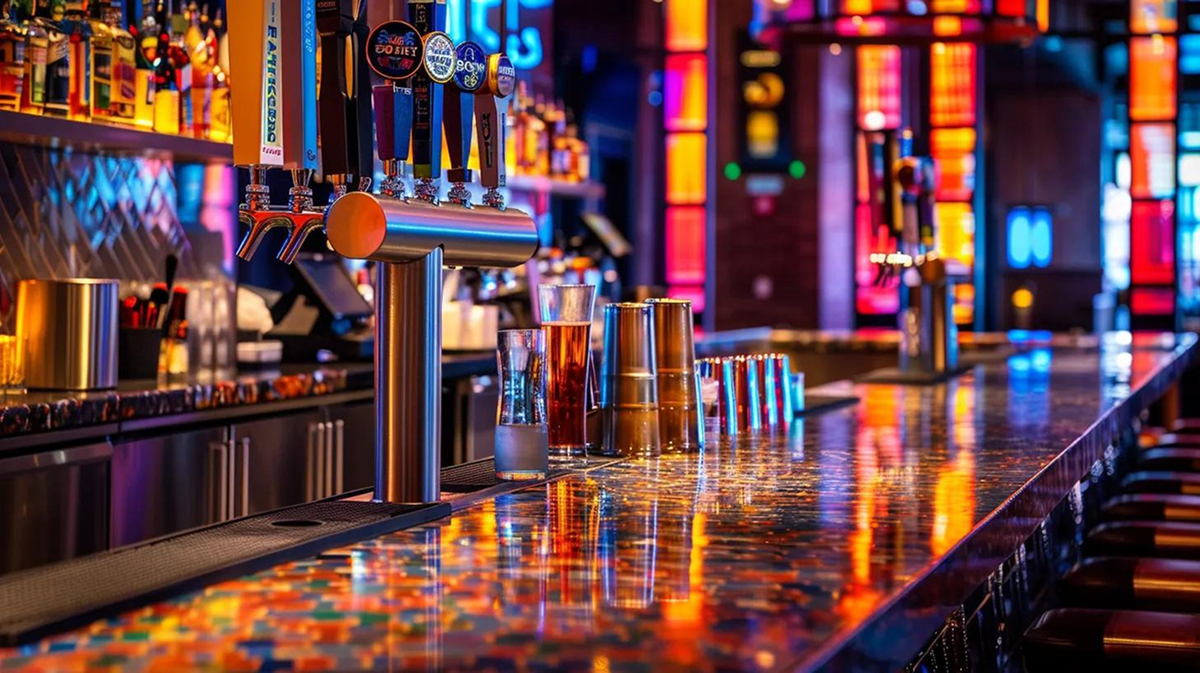
Key Takeaways
- A commercial draft beer setup requires a comprehensive understanding of equipment from kegs to refrigeration systems.
- Proper installation, pressure regulation, and temperature control are essential for maintaining consistent beer quality.
- Strategic planning and routine maintenance optimize profitability and customer satisfaction.
- Selecting the right components, such as couplers, gas systems, and beer lines, ensures efficiency and hygiene.
Understanding Core Components of Your Commercial Draft Beer Setup
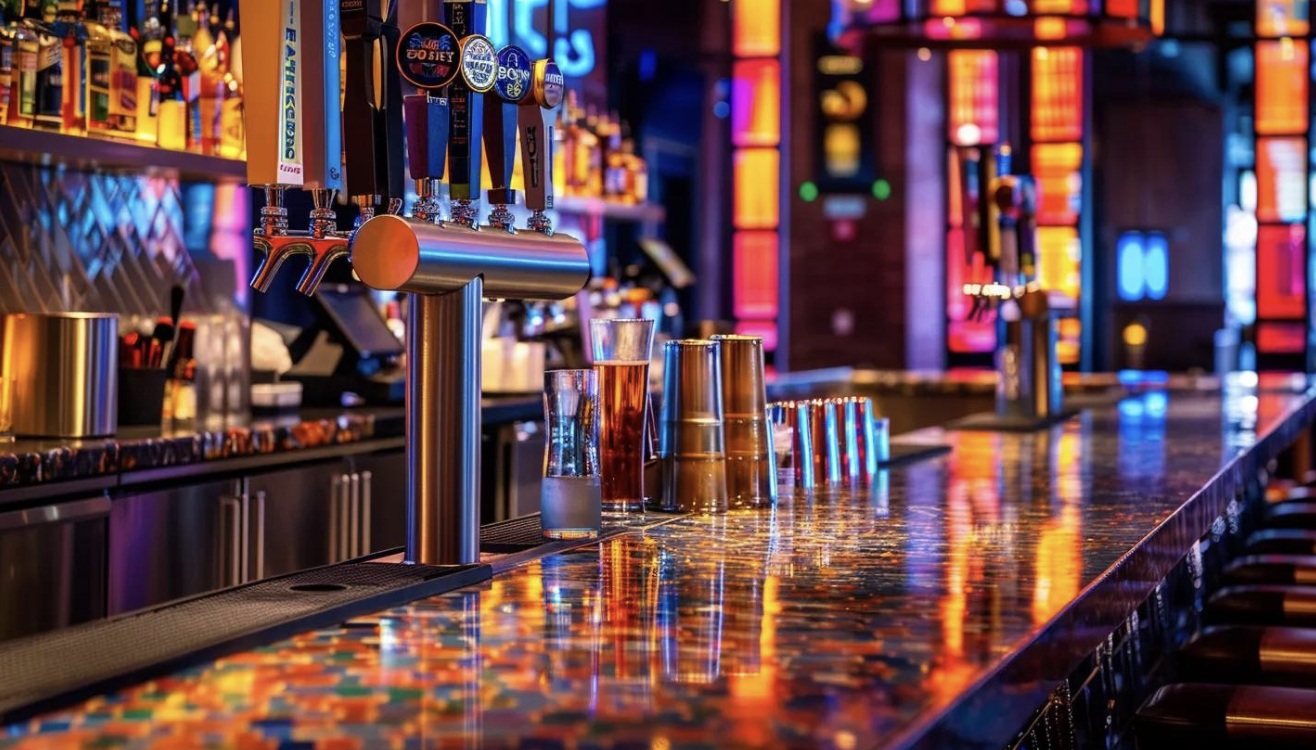
This section outlines the essential components of a commercial draft beer system, highlighting the techniques used to manage draught beer and emphasizing the importance of having the correct equipment to handle, transfer, and dispense beer while preserving its quality.
Kegs and Couplers: The Foundation of Your Beer Supply
Kegs store large volumes of draft beer (often enjoyed as draught beer) while couplers connect the keg to the dispensing system. The freshness and taste of the beer depend on using quality kegs or product and stainless draft equipment. Manufacturers recommend specific models to ensure a secure fit and prevent oxygen exposure that could harm beer quality.
Gas Systems CO₂ Nitrogen and Blenders for Perfect Pours
Gas systems using carbon dioxide and nitrogen pump beer from the keg to the tap. CO₂ pressurizes the keg and maintains carbonation, while nitrogen creates the creamy head desired for stouts like Guinness. Blenders mix these gases in precise ratios; improper blending may cause excessive foam, compromising the visual appeal and customer satisfaction.
Beer Lines and Trunklines: Ensuring Beer Integrity From Keg to Tap
Beer lines and trunklines transport beer while preserving its temperature and carbonation. The diameter and material of the lines affect flow rate and temperature consistency, and proper insulation prevents unwanted heat transfer or fluctuations. Regular cleaning keeps the lines free from residues or contaminants that can alter flavor.
Faucets, Shanks, and Towers: The Dispensing End of Your Setup
These components control the pour into glasses. Faucets engineered for smooth, consistent pours must be maintained—through regular cleaning and gasket replacement—to prevent leaks and microbial buildup, thereby ensuring the best taste and presentation. Also note, always use stainless steel when it comes to dispensing equipment.
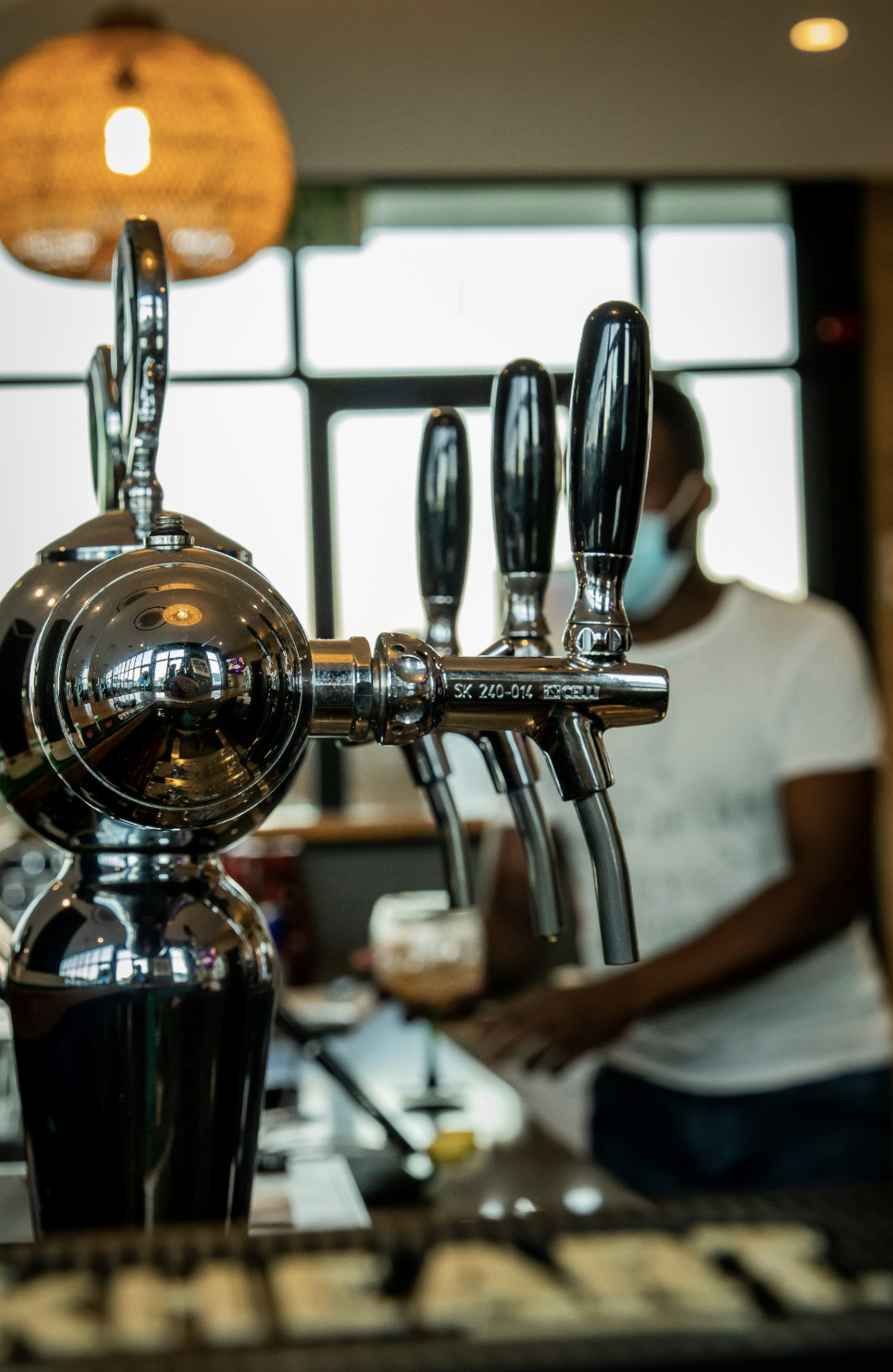
Refrigeration and Glycol Systems: Maintaining Optimal Beer Temperature
Refrigeration systems, paired with glycol cooling units, keep beer at an ideal serving temperature from storage to pour. Glycol units effectively manage temperature along extended lines, preventing issues such as beer warm-up or excessive foaming. Regular calibration of thermostats and maintenance checks are key to preventing system failures.
Planning Your Commercial Draft Beer System Installation
Proper planning ensures an efficient and functional draft beer setup. It involves evaluating available space, selecting optimal components, and planning power and plumbing configurations to maximize performance and sanitation.
Assessing Space and Layout for an Efficient Setup
A well-organized layout is critical for both performance and safety. Detailed measurements are necessary to correctly accommodate equipment such as kegs, taps, and cooling units. Architects and engineers are often involved to optimize the routing of beer and glycol lines while minimizing stress on the system.
Determining the Number of Taps and Beer Variety
The number of taps directly influences the range of beer styles available to customers. Operators must assess expected volume demands and seasonal preferences. In some setups, digital dashboards monitor tap performance and inventory in real time, ensuring that diverse offerings are always available.
Selecting Direct Draw Versus Long Draw Systems
Direct draw systems, with shorter distances, offer faster response times, while long draw systems allow more flexible layouts but require higher pressure and enhanced insulation to maintain consistent temperatures. The choice depends on the establishment’s floor plan and specific performance needs.
Material Choices: Prioritizing Stainless Steel for Hygiene and Durability
Stainless steel is favored in commercial settings due to its durability, corrosion resistance, and ease of cleaning. High-quality stainless steel components help lower maintenance costs and reduce the risk of flavor contamination or oxidation, meeting health regulations effectively.
Power and Plumbing Requirements for Your Commercial Setup
Integrating power and plumbing systems seamlessly with the draft beer setup is essential. Specialized voltage for refrigeration units and precise drainage and water supply designs ensure system stability, prevent premature equipment failure, and support efficient operation during heavy use.
Key Considerations for a Successful Commercial Draft Beer Setup
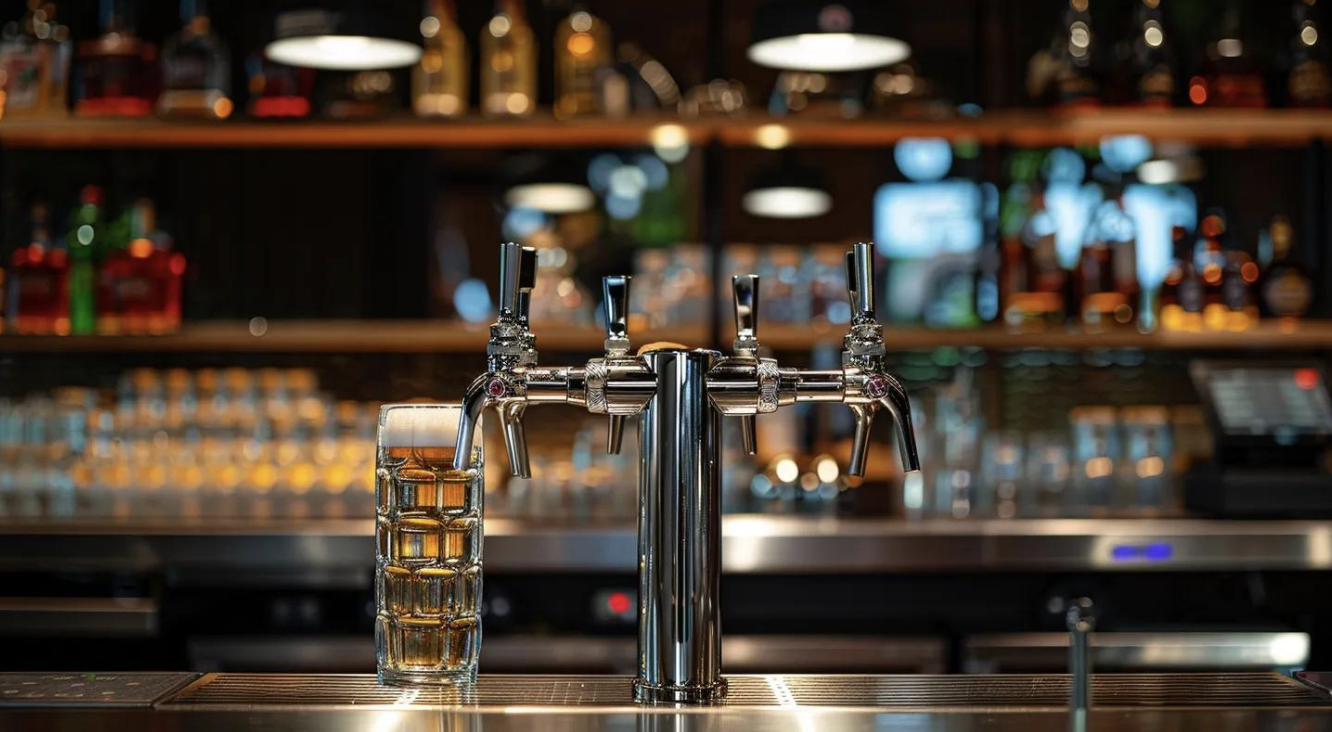
Several factors contribute to a successful draft beer setup, including technical specifications, regular maintenance, and overall system performance. These measures not only guarantee quality beer dispensing but also enhance customer satisfaction.
Temperature Control Across the Entire System
Maintaining a consistent temperature from storage to the tap is crucial for optimal carbonation and flavor. The use of smart thermometers and digital controls enables operators to monitor and adjust temperatures in real-time, thereby reducing the risk of premature foaming or flat beer.
Pressure Regulation for Consistent Carbonation and Pour
Accurate pressure regulation ensures that each beer is dispensed with the proper carbonation level. Pressure regulators and secondary gas blenders work together to maintain a consistent flow, preventing over-carbonation or excessive foam, which can detract from the beer's quality.
Proper Keg Storage and Handling Practices
Proper storage in a cool, dark environment and careful handling of kegs prevent damage to seals and gaskets. Regular staff training on lifting and rotation techniques minimizes risks associated with pressure loss and contamination, extending the quality of life of the beer.
Selecting the Right Coupler for Each Beer Type
Different beer styles may require specific coupler types to ensure the correct flow and pressure. Using the appropriate coupler for the keg prevents leaks and preserves the intended flavor profile. Following manufacturer guidelines is essential for consistent performance.
Glassware Cleaning and Conditioning for the Best Beer Presentation
Clean and well-conditioned glassware is essential for preserving beer taste and presentation. Regular high-temperature cleaning routines remove residues and odors, ensuring that each pour upholds the brand’s reputation.
Installation Steps for Your Commercial Draft Beer System
Running and Insulating Beer and Glycol Lines
Proper routing of beer and glycol lines minimizes bends and pressure losses. Insulation protects against temperature fluctuations and condensation, preventing taste degradation and unwanted foaming.
Connecting Kegs, Couplers, and Gas Regulators
Connecting kegs with the correct couplers and calibrating gas regulators is essential for maintaining beer carbonation. Each connection is leak-tested, and pressure settings are documented for ongoing maintenance and troubleshooting.
Setting Up and Calibrating Gas Blenders and Secondary Regulators
After installation, gas blenders and secondary regulators must be precisely calibrated to produce the correct gas mixture for the beer style. Regular calibration minimizes issues such as over-foaming or under-carbonation and secures optimal dispensing conditions.
Testing the System for Leaks and Proper Flow
Comprehensive testing, including pressure tests and flow rate measurements, confirms that all system components function as expected. This final testing ensures a reliable system that delivers high-quality beer consistently.
Maintaining Your Commercial Draft Beer Setup for Quality and Longevity
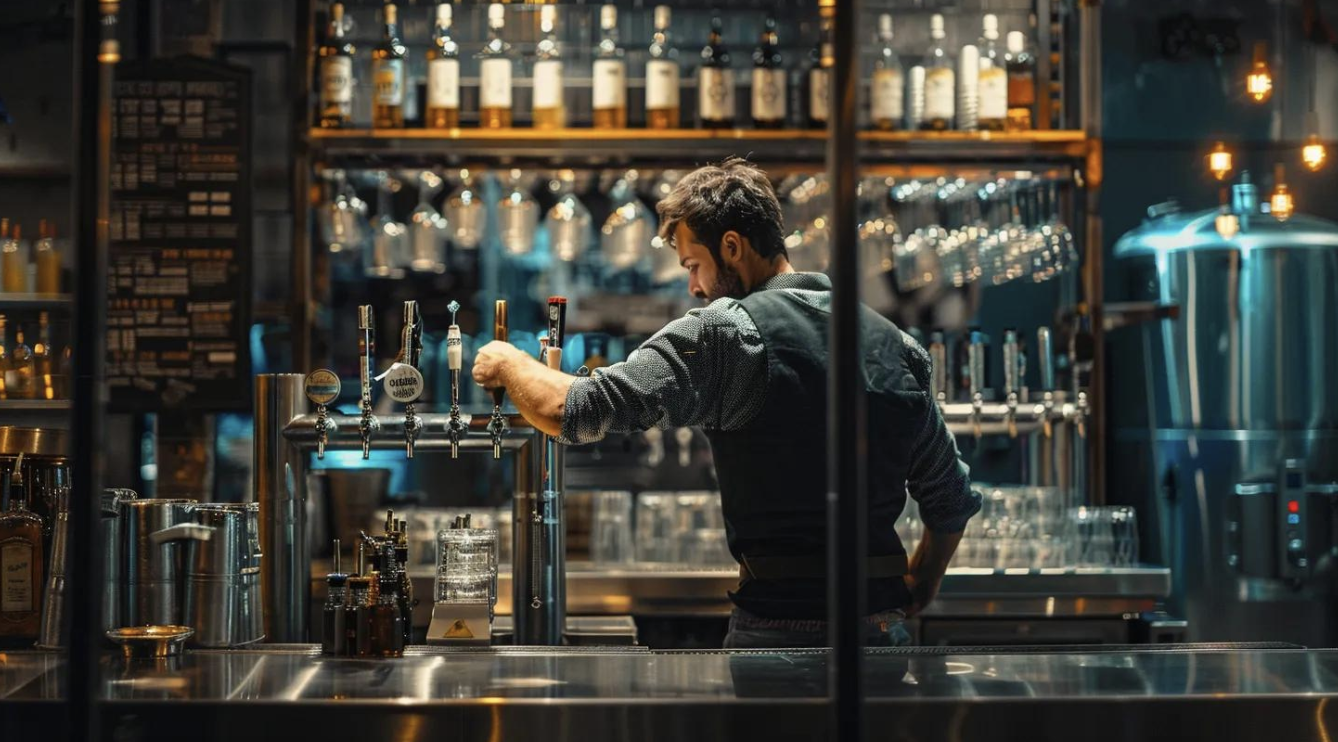
Ongoing maintenance is critical to the long-term performance and efficiency of a draft beer system. Regular cleaning and inspections extend the lifespan of each component.
Regular Cleaning Schedules for Lines, Faucets, and Couplers
Implementing a strict cleaning schedule for all components—cleaning every 14 to 28 days using recirculating pump systems where possible—prevents microbial buildup and flavor contamination while meeting health standards.
Routine Inspection of All System Components
Quarterly inspections by professional technicians help identify early signs of wear, corrosion, or leakage, allowing for timely replacements and minimizing system downtime.
Glycol Power Pack Maintenance and Checks
Regular checks of the glycol power pack, including refrigerant levels, drain functionality, and thermostat calibration, are essential to prevent unexpected breakdowns and maintain efficient cooling.
Troubleshooting Common Issues Like Foaming or Flat Beer
Identifying problems such as excessive foaming or flat beer early is crucial. Providing staff with troubleshooting guides and training enables quick corrections before these issues affect service quality.
When to Replace Components in Your Draft Beer System
Monitoring component usage and adhering to manufacturer-recommended replacement schedules for items such as gaskets, couplers, and regulators prevents unexpected failures and ensures peak system performance.
Optimizing Your Commercial Draft Beer Setup for Profitability
Minimizing Beer Waste Through Proper System Balance
Regular calibrations of gas pressure, temperature, and line insulation help ensure consistent pours, reducing waste. Monitoring consumption data allows for swift operational adjustments.
Using FOBs (Foam on Beer Detectors) to Reduce Loss
Modern systems use Foam on Beer Detectors to send real-time alerts on foam deviations, enabling immediate corrections and minimizing financial losses due to waste.
Training Staff on Correct Pouring Techniques and System Operation
Regular staff training on proper pouring techniques and system operation is vital. A well-informed team can quickly identify and resolve minor issues, leading to a more consistent overall service.
Monitoring Keg Yield and System Performance
Digital monitoring systems provide real-time metrics on keg yield and tap performance. These insights help manage inventory efficiently and identify underperforming components for timely adjustments.
Upgrading Your System for Increased Demand or Efficiency
As customer demand grows, consider upgrading components—such as adding more taps or integrating advanced temperature controls—to maintain high standards. These investments lead to long-term savings and improved customer satisfaction.
Table: Commercial Draft Beer System Components Comparison
Before diving further into maintenance, it is useful to review the key components of a draft beer system and their purposes.
Regular maintenance, as indicated in the table, maximizes system efficiency and minimizes downtime.
Frequently Asked Questions
Q: How often should I clean my beer lines and taps?
A: Beer lines and taps should be cleaned every 14 days, with monthly inspections to prevent microbial buildup and ensure optimal flavor.
Q: Why is maintaining proper gas pressure necessary?
A: Maintaining proper gas pressure ensures consistent carbonation, reducing excess foam and delivering optimum tasting conditions.
Q: Can regular maintenance impact overall profitability?
A: Yes, consistent maintenance minimizes waste, reduces repair costs, and improves pour quality, resulting in higher customer satisfaction and profitability.
Q: What is the ideal storage temperature for draft beer?
A: Most beer styles require storage between 36°F and 38°F to preserve flavor and maintain carbonation.
Q: How do I know when to upgrade system components?
A: Monitor performance metrics and follow manufacturer lifespan guidelines; upgrade components when efficiency declines or issues recur.
Final Thoughts
In conclusion, a successful commercial draft beer setup relies on thorough planning, precise component selection, and ongoing maintenance. Every element—from kegs to refrigeration systems—must work in harmony to deliver beer at its best quality. By optimizing temperature, pressure, and sanitation protocols, operators not only boost profitability but also ensure a consistently superior product. Forward-thinking investments in system upgrades and staff training are essential to meet growing demand and maintain a robust, efficient service environment.



